There is a line in Rilke’s “The Spanish Trilogy” — “…to make the Thing, Lord Lord Lord, the Thing” — that rings down through this amazing interview, NC Contributing Editor Nance Van Winckel with visual artist Lynda Lowe, an interview about art, making art, and the art of collaboration. All art is, yes, about making Things. We forget that sometimes. Expressing ourselves, making a point, sending a message, selling a line, finding a market, all take a back seat to the thingness of the Thing, its sudden and utter presence, sui generis and unique. Whether it’s a poem or a painting or some combination thereof (or a novel or a figure in a block of stone…).
dg

01 Installation view of The Object of the Object, for the Poetic Dialogue, 13”H x 20’W x 4”D, 2008
Collaboration with poet Nance Van Winckel
NVW: I thought we’d begin with a few questions about our collaboration for the Poetic Dialogue Project, a group exhibit of poets and artists who were paired to combine poetry and visual art. Since we both live in Washington, we were paired together. I remember coming to your lovely studio near Tacoma and seeing all the cool “tools” you’d collected and thinking about a poem I’d written called “Left to Our Own Devices,” which was also about tools, tiny clock-repair tools.
I sensed we were both interested in objects and, as we went on to discuss, “thingness” or “objecthood.” We called our collaborative project The Object of the Object. I particularly love the piece of yours with those calipers in it. I would suppose that as an artist you must have developed a close kinship with the “tools of your trade.” Can you describe a bit what our collaboration WAS (the series, sizes, etc.) and also talk a little about the subject of “things” and its appeal to you as a visual artist?
Lynda Lowe: The Poetic Dialogue’s intent was to have a visual artist and a poet collaborate in the creation of a new work for a traveling exhibition. It was on my mind to not just make an illustration for your poems or for you to write something in reaction to a painting, but to integrate these forms as much as possible. Since we didn’t know each other before beginning the collaboration, we spent time sniffing out the turf where we might find something common and fertile. We passed back and forth word lists, favorite readings, images, and poems to see where we might begin.
Through Rilke’s poetry we discussed the interiority of the object, its thingness: “to make the Thing, Lord Lord Lord, the Thing.”
Things contain narrative, perhaps even a kind of sentient presence. Humans make stories from, and meaning out of, even the most random collection of them. The idea seemed a good starting place as it shows up in your poetry and also in my imagery. Thus began “The Object of the Object.”
Our work had to grow organically between us and achieve a balance that honored both word and image. I started with a group of paintings on 12” square panels that were deliberately left unfinished and sent images to you. You sent poetry in progress. We had to meander about with some directionless hiking for a while. An “aha!” moment for me was reading the last line in your poem “Coxswain”: “in us are the woods.”
Beautiful! Imagery began to coalesce for me. Our circumvolution continued. I remember we discussed the creation of a codex form where a viewer-reader would have to physically walk the expanse of a series of panels, thereby engaging time and memory through repeated imagery and text. The final product was a twenty-foot span of eighteen panels that were seated on a shallow shelf, leaning against the supporting wall.
[youtube]http://www.youtube.com/watch?v=yfxepF7Mcgc[/youtube]
NVW: During our collaboration, I recall you also brought up another term that’s near and dear to my heart: wabi-sabi. I think you rightly sensed my simpatico with this idea as you so well described it in our email exchange back then, ” the worn beauty of age and the graceful disorder of nature.” I know your work is influenced by Eastern philosophies in general and perhaps by the concept of wabi-sabi in particular. In our collaboration, how did these ideas influence the process and/or product?
Lynda Lowe: We both pay attention to that earned patina: your marmot playground of rusting factory equipment and my hundreds of old wall photos taken on travels. The layers of wear, weather, the mark of a passerby build such beautiful surfaces that speak of narrative use and history. Nature has these cycles of age and re-growth too of course. Being a gardener you can’t miss it. Imperfection and disorder is an undeniable part of the landscape on every level. When I’m developing a painting, vestiges of many additions and subtractions layer the work and this is never quite predictable. It lends a wabi-sabi quality to it.
NVW: I know you’re a great lover of T.S. Eliot and in particular his Four Quartets. You’ve used passages of his poetry in your work before, as well as lines from other poets, myself included. Can you explain a little about how you think text—and perhaps specifically poetry—may best share the visual field with your incredibly textured and expansive imagery?
Lynda Lowe: Text and imagery are in some basic way, information. They comprise part of a larger perceptual field. I’m very interested in how we construct meaning from a personal blend of reason, intuition, memory, and spirit. In the combining of elements such as poetry, diagrams, equations, realism, intuitive mark, and abstract color field, I’m creating a matrix that suggests these are all part of a unitive whole.
NVW: I was happy to reconnect with you recently in Tacoma at the Museum of Glass and the opening for your wonderful show, a series of 108 ceramic vessels called The Patra Passage. Again, I realized we had another mutual interest, Lewis Hyde’s wonderful book The Gift. I recall reading this book in the mid-1980’s and being very moved. It helped me to feel a better acceptance and even joy about my own life-choice: to make poems. Hyde speaks about art as a kind of gift the artist gives to her world. The gift is meant to be shared. This making and giving concern important aspects of community and shared values.
Hyde’s messages came to me at a time when I really need to hear exactly that. The promises of financial reward, publishing contracts and such sorts of “recompense” had begun to feel far off and unreachable to me, but I still loved and valued poetry and I wanted to continue with this art front and center in my life. Can you talk about your vessels which you gave away, and which the recipients (myself included) will again give away, and so on—and how, as an artist, you think about this interconnectedness of art-making and art-giving? And how The Patra Passage, in particular, was inspired? Here’s the wonderful video about that project:
[youtube]http://www.youtube.com/watch?v=GKd7mLPFzes[/youtube]
Lynda Lowe: After a rough couple of years and I felt I was looking at life through the other end of the telescope. What do I consider valuable when viewing things in reverse, not ahead? I’d been incubating ideas for the Patra Passage for over a decade. The image of a bowl repeatedly shows up in my paintings as a symbol for the fluid act of giving and receiving. Interconnectedness is of great interest to me.
I knew where I wanted to take the idea, but the project required a total change in media and a large commitment of time without income. Lewis Hyde’s writing was and is indeed a true gift and encouragement. Also hugely significant is the privilege of many wonderful supporters and participants – you being one of them! The Passage seeks collaboration and connection. The website more fully describes the project. I wholeheartedly invite interaction from all visitors to the site: www.patrapassage.com.
NVW: What’s your next project?
Lynda Lowe: I’m in that transitional phase now after the launch of the Patra Passage where it’s back to the meandering path without a destination in mind. For the moment I’m playing again with my old friend T. S. Eliot and The Four Quartets. I don’t think I could ever mine that out. There are several exhibitions ahead, including the return of the Patra vessels at the Museum of Glass in Tacoma. And soon I’ll be working collaboratively with poet Joseph Heithaus on another project. I’m grateful to be doing something I love and that challenges me.

The Path to the Path, 24” x 56” water and oil media, wax on panel, 2008 (T.S. Eliot quote used in this painting, title credit to Nance)
Falling and Flying II, 48” x 48”, water and oil media, wax on panel. 2012 (Rilke quote used in this painting)
—Nance Van Winckel & Lynda Lowe
——————————————–
After completing an MFA at Indiana University, Lynda Lowe taught fifteen years at Wheaton College and Northern Illinois University. In 1998 she left her academic position and began painting full-time. Soon after, a move to the Pacific Northwest brought fresh opportunities and the construction of a studio on the Puget Sound in Washington state where she currently resides.
Lowe’s overall imagery combines sections of color field, realism, text, and diagramatic figures. She employs fragments of poetry, handwritten scientific observations, and mathematical formula and layers them alongside highly rendered recognizable images to suggest that the construction of meaning is shaped from many different frames of reference. Archetypal symbols are deliberately integrated into her art, pointing out that the human experience is intrinsically connected the sentient world. Her surrounding environment and her travels abroad also profoundly impact her work.
A recent project, the Patra Passage. centers on the gifting of 108 hand-built ceramic bowls which are re-gifted at least three times throughout one year. After they return, the Museum of Glass in Tacoma, Washington, will host an exhibition February – May, 2015.
Lynda Lowe’s paintings have been widely exhibited nationally in galleries and museums. She has been the recipient of two Artist Fellowship awards from the Illinois Arts Council, a distinguished resident of the Ragdale Foundation, a finalist of the Neddy Award, and represented by the following galleries:
- Gail Severn Gallery, Sun Valley, ID www.gailseverngallery.com
- Arden Gallery in Boston, MA www.ardengallery.com
- Forre Fine Art in Aspen and Vail, Colorado and Ft. Lauderdale, Florida www.forrefineart.com
- Abmeyer+Wood, in Seattle, Washington www.abmeyerwood.com
More of Lynda Lowe’s work can be viewed on www.lyndalowe.com and www.patrapassage.com.
—
Nance Van Winckel is the author of six collections of poems, including After A Spell, winner of the 1999 Washington State Governor’s Award for Poetry, and the recently released Pacific Walkers (U. of Washington Press, 2013). She is the recipient of two NEA Poetry Fellowships and awards from the Poetry Society of America, Poetry, and Prairie Schooner. Recent poems appear in The Pushcart Prize Anthology, The Southern Review, Poetry Northwest, Crazyhorse, Field, and Gettysburg Review. She is also the author of four collections of linked short stories and a recent recipient of a Christopher Isherwood Fiction Fellowship. Boneland, her newest book of fiction, is just out with U. of Oklahoma Press. Her stories have been published in AGNI, The Massachusetts Review, The Sun, and Kenyon Review. Nance’s photo-collage work has appeared in Handsome Journal, The Cincinnati Review, Em, Dark Sky, Diode, Ilk, and Western Humanities Review. New visual work and an essay on poetry and photography appear in Poetry Northwest and excerpts from a collage novel are forthcoming in Hotel Amerika and The Kenyon Review Online. Click this link to see a collection of Nance Van Winckel’s mash-ups of poetry and photography, which she calls photoems. She is Professor Emerita in Eastern Washington University’s graduate creative writing program, as well as a faculty member of Vermont College of Fine Arts low-residency MFA program. She lives near Spokane, Washington with her husband, the artist Rik Nelson. Her personal web page is here.
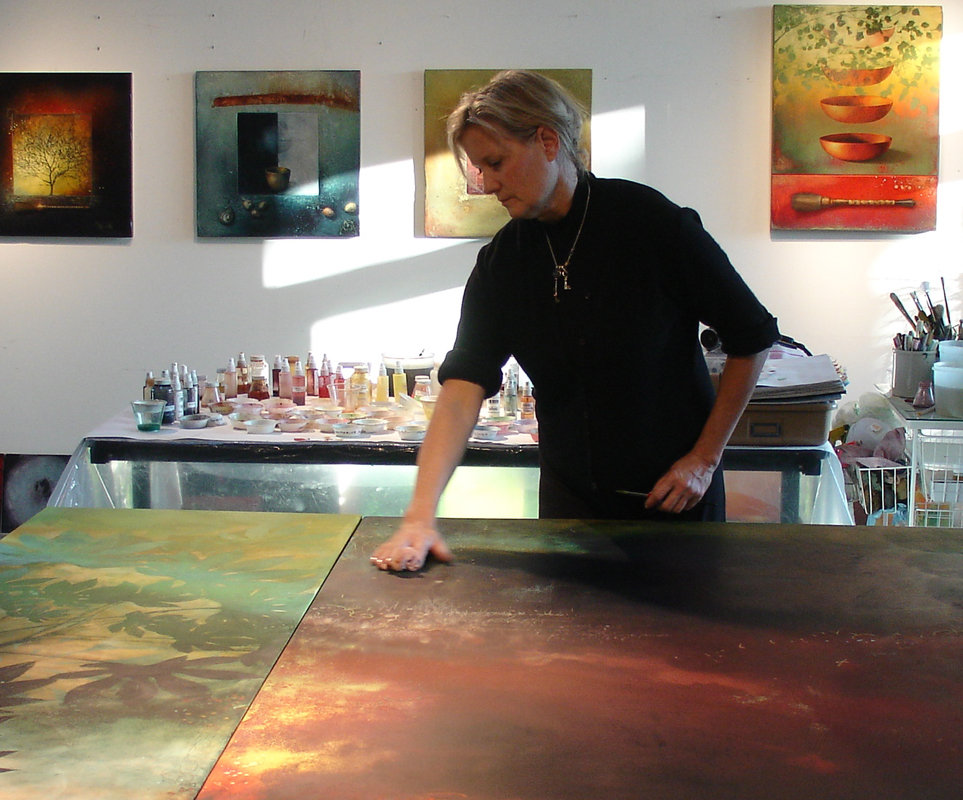


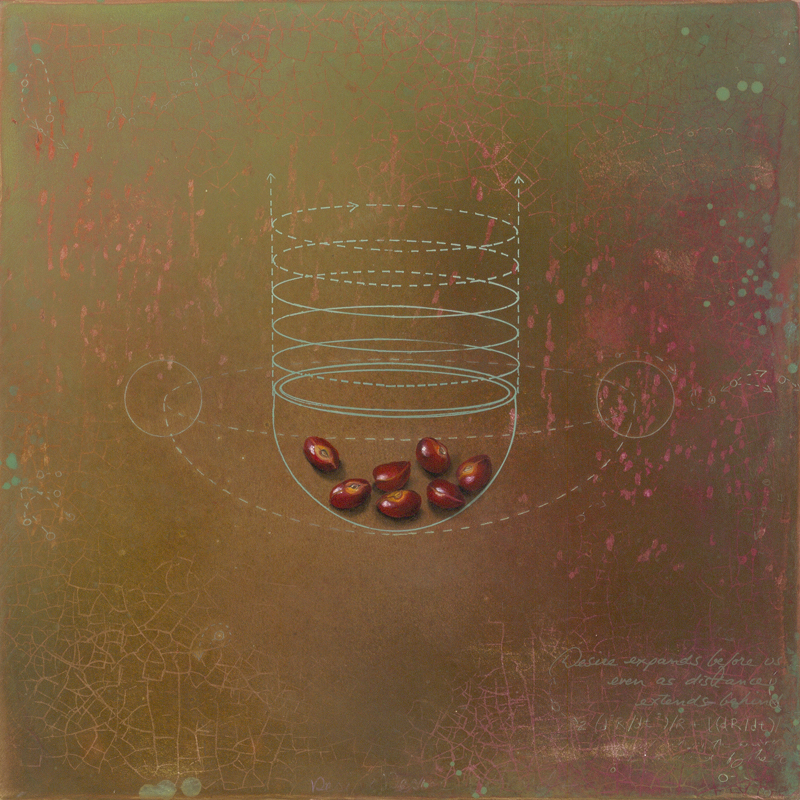
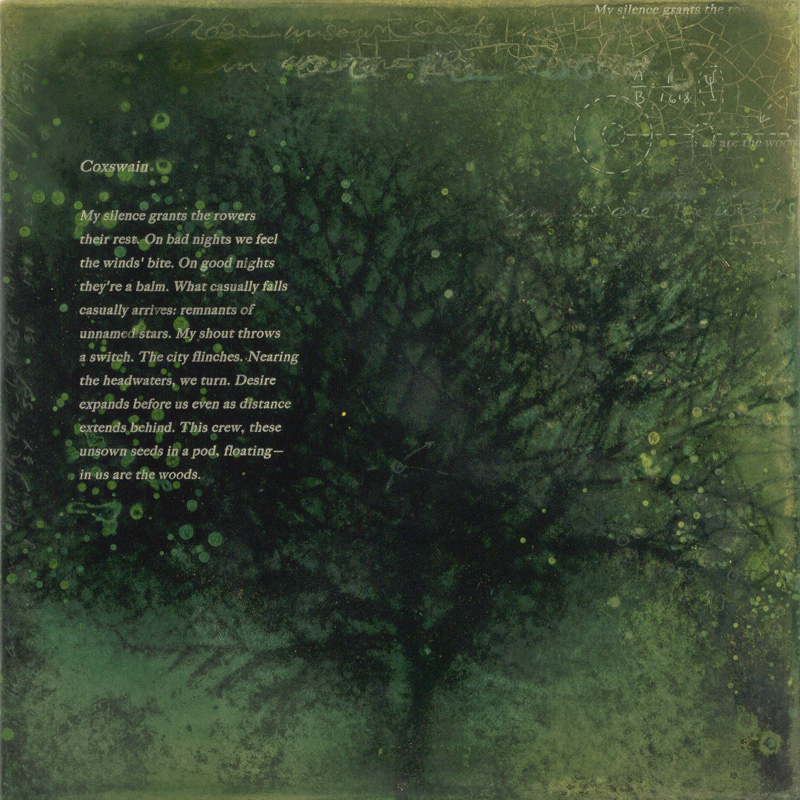
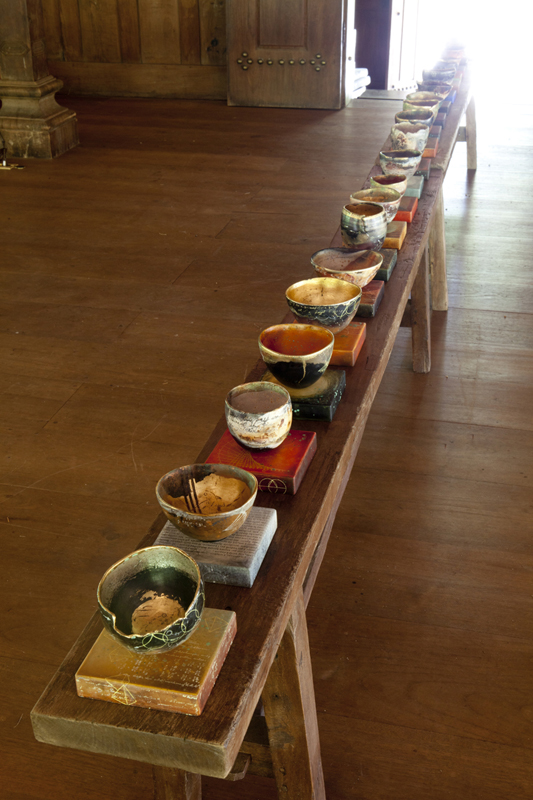
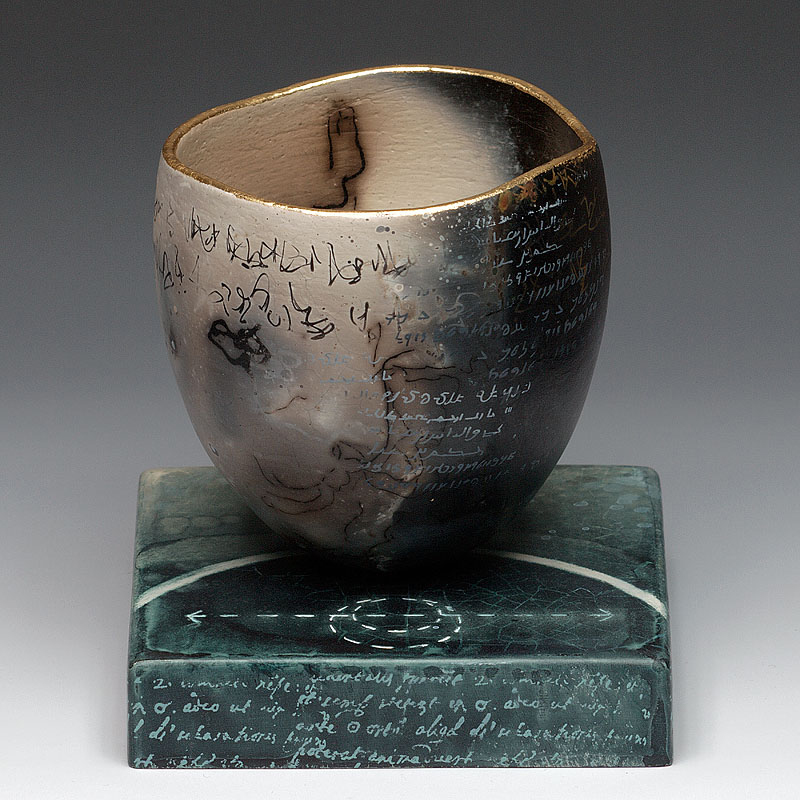


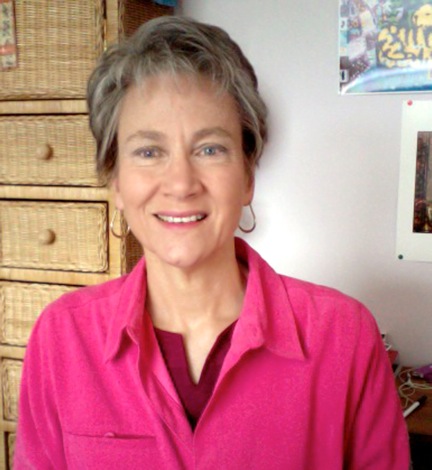
“Objecthood,” which seems essential to the full appreciation of some of the arts, like sculpture and painting, presupposes, it is reasonable to say, first-hand experience (of the art). Now, of course, paintings and sculptures are things made of various kinds of materials: usually paint, canvass, and wood, in the first instance, or stone, metal, or fabric in the second. It also stands to reason that when these various materials are used to depict or represent other things, the objecthood of the things depicted can only be apprehended indirectly. Paint and stone are, of course, also media. But this doesn’t change the basic point here, which involves an unmediated experience of the object, or at least, an experience that preserves something of the object’s “thingness” without resorting to depiction.
Heidegger speaks of the violence done to the “thingly element of things,” and the part that thought plays in this (and I would include its primary instrument, language, as well). He goes on to state that it is possible to avoid this assault, “Only, certainly, by granting the thing, as it were, a free field to display its thingly character directly.” (“The Origin of the Work of Art,” p. 25) If I understand him correctly, Heidegger is talking about the direct, immediate experience of the (art) object through sensory (or bodily) engagement unmediated by thought; a kind of Ur-experience; a primal apprehension; a fundamental interaction between being and thing. Now, we may question whether such unmediated experience is possible or ever was possible following the invention of pictures and language by our distant ancestors, but Heidegger’s point about a “free field” where the thingly character of the object can be apprehended directly, is well taken.
All art images, digital or otherwise, are representations and therefore the art is (and can only be) experienced indirectly. If we are to refer to the “objecthood” of art images, it has to be with a caveat, namely: that the thingly character of the art can only be surmised. This is more than simply a matter of nit picking. Moreover, where the image of an artwork, for example, a painting, depicts an object (such as a pair of calipers), the thing pictured will be twice removed from experience. When actual things are used to make art and the art is experienced directly, “thing-ness,” or “objecthood,” seems, well, closer at hand. * This is why I found your “Patra Vessels” more compelling than your paintings. Using functional ceramic bowels as symbolic objects – as things that denote both giving and receiving (made real by an exchange of these things!), is both inspired and moving. But it is the collaboration between you and poet Nance Van Winckel, and the subsequent interview, that adds something vital to the ongoing relationship between the visual and verbal arts. Congratulations. Both of you have made a timely contribution toward appreciating the gift (or gifts) that poetry can bestow on visual art and vice-versa.
* This does not alleviate the question (or problem) of thought and how it intrudes, as it were, on our experience of the thing. I appreciate Heidegger’s elevation of the importance of the art itself, above even its creator, but his idealized (and nostalgic) view of an unmediated experience of art seems implausible. I cannot say that I fully understand Heidegger’s position (his belief that the philosopher should defer to the poet makes his prose dense at times), but based upon what I do understand his stance seems romantic and problematic.
Paul
Paul, so glad you brought up Heidegger and the “thingly element of things.” Yes, it IS hard to approximate that beyond the thing itself. I think about a poem or a painting being suffused with the thing’s thingness, but of course only the “feel” of it. The calipers are like that for me. But yes, I love the patra vessels since they are not JUST representational. They live AS things. Thanks for your good feedback and spending time with the work here.
Nance:
My first thought upon reading your reply was that the “Patra Vessels” are not just functional; or perhaps, are functional in more than simply a utilitarian sense. Your remark about the painting (or poem) being “suffused with the thing’s thingness,” brought to mind something that philosopher, Paul Crowther wrote:
“…we also know that the painting is a painting. This means that we recognize its space as one that is symbolic and thence not continuous with the real network of the spatiotemporal relations which our body inhabits. It has rather the status of an image, or a symbolic extension of perception.” (“The Transhistorical Image, Philosophizing Art and its History,” p. 19) That last sentence speaks volumes. This is how I understand your “feel” of the depicted thing in a painting.
Paul